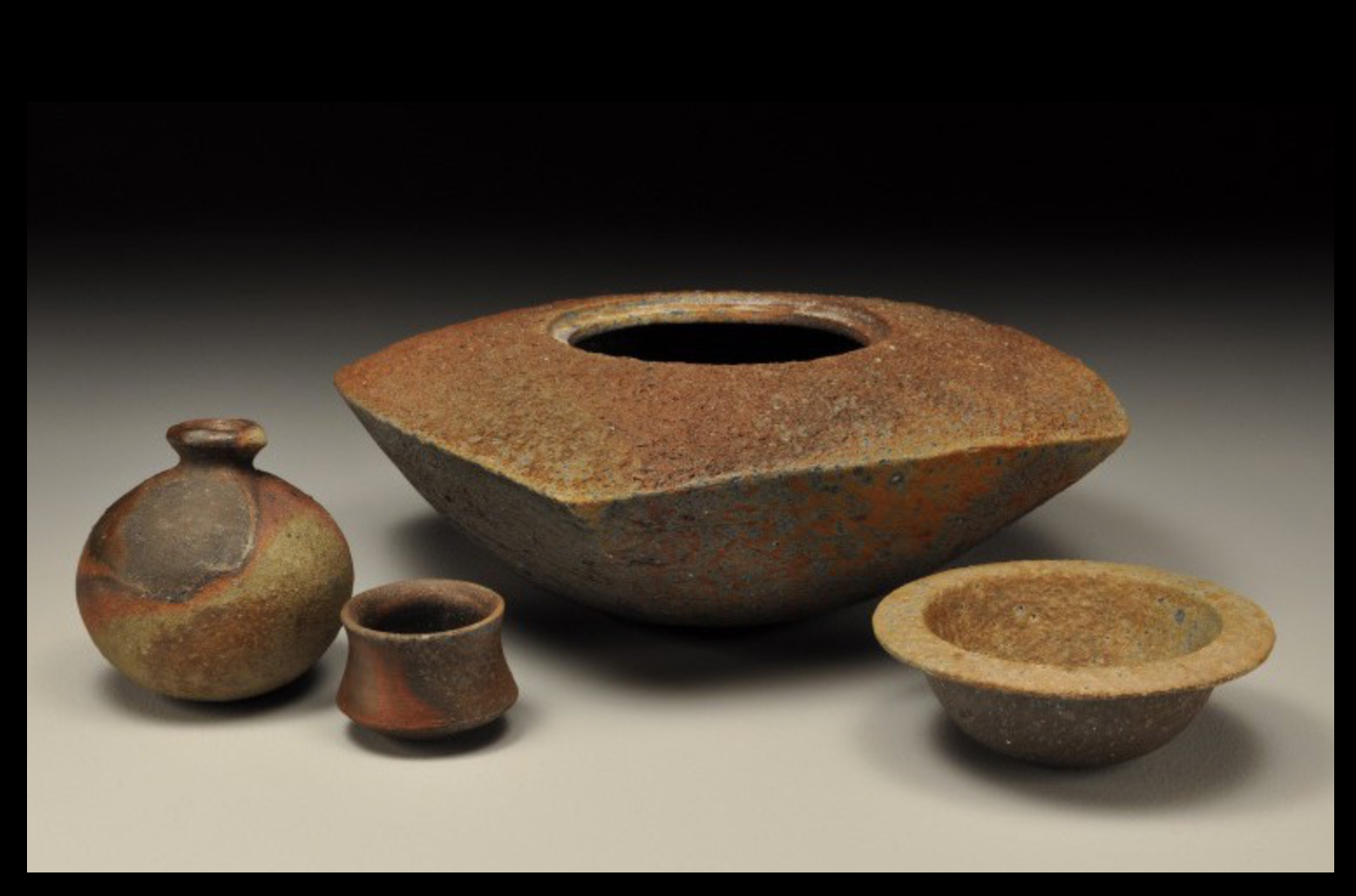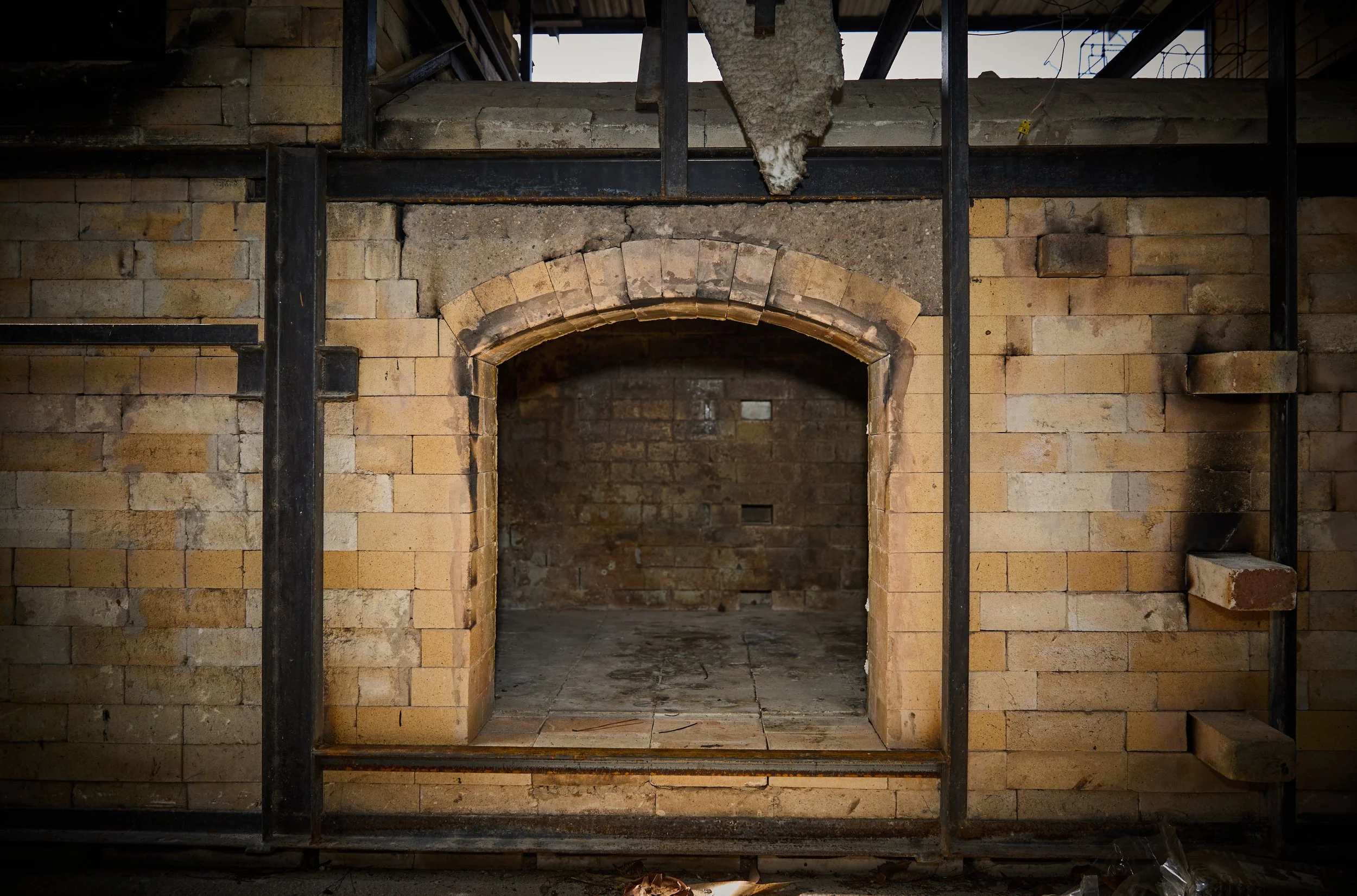
Portrait of a Kiln:
Trevor T. Dunn
Trevor Dunn
Jacksonville, Florida
Train Kiln
I am drawn to wood fired ceramics because of the color palette, variety of textures, and sense of recorded history inherent in the process. Also, the physicality of the process offers a unique firing experience that allows the firing crew to directly influence the outcome of the firing. Through careful manipulation of the kiln environment during the firing, ceramic artists can harness the energy of the sun that is stored within the wood to transform clay into stone. Wood firing not only expresses the power of natural phenomena to transform clay into stone, but it also offers artists an inimitable canvas for creative expression.
Aesthetic nuances are encouraged through careful placement of pieces in the kiln and a concentrated effort to control the firing process. With thoughtful loading of the kiln, artists can manipulate the path of the flame and influence the distribution of ash onto the surfaces of the pieces. This intentional arrangement of pieces in the kiln results in a wide range of dynamic effects, ranging from subtle variations in color to dramatic patterns and textures. The different types of wood that are used to heat the kiln can offer distinctive differences in the natural ash glaze color and texture. The natural patinas that emerge during wood firing add depth and character to the finished pieces. Flame patterns, formed as the fire moves through the kiln, leave unique patterns on the pieces. Additionally, the volatilization of salts emitted from the burning wood can create mesmerizing glazes and surface finishes, further enhancing the visual appeal of the artworks. All of these variables combined imbue the pieces with a distinct beauty that celebrates the inherent connection between wood, clay, and fire.
My work in ceramics encompasses four different genres of the medium; utilitarian ware, ceremonial objects, large vessels, and sculptural forms. A range of concepts inform the work that I make and a variety of firing techniques are used to compliment the style of individual bodies of work. Each of the genre pursuits are informed by different conceptual motives. Chasing the formal aspects of line and form inspires the aesthetic direction of my studio practice.
My personal aesthetic originates both from a fondness for natural objects and a fascination with tools. Rocks and pieces of wood found in nature reveal their history and tell a story when observed closely. I have had a fascination with tools since childhood, particularly tools that have developed a patina from continued usage. These wear patterns reflect the tool’s usage. When looking at my work, I see markings that allude to the history of the piece.
Firing my work in a wood-burning kiln allows the atmosphere of the kiln to react with the surface of my pots. The firings usually take two or more days in which the kiln is continuously stoked with wood. Wood ash is deposited on the pieces in the kiln and eventually melts to create a glaze on the surface of the pieces. It is the distribution of ash and the patterns of flame-work that provide evidence of the making process. Loading the kiln is an integral part of my decorating process which enables me to initiate a composition of flamework and ash deposition on the pieces. While making a piece, consideration of its placement in the kiln drives some of my aesthetic decisions.
With Impeller, I reference an imagined part from a piece of equipment. I am interested in how mechanical objects imply a relationship between components in a system:
‘This solitary machine part appears to be a relic of some mechanism? But from what machine? What was its purpose? Why is it no longer in use?’
I hope that my pieces will generate a point of reflection for viewers, to ask themselves about how they affect their friends, family, community, and the environment. The concept of reflecting upon a relic alludes to the idea of a legacy, and will hopefully give viewers a chance to consider their own legacy.
The process used to create my sculptural pieces employs wood firing an iron-bearing clay to a temperature of 2300 degrees Fahrenheit, and then maintaining that temperature for a minimum of six hours to build up ash deposits. During this six-hour time frame, the kiln is continually over-stoked with wood to build huge coal beds that engulf some of the pieces. These beds are then allowed to burn back down at regular intervals, which adds more layering of ash and color to the surface. The pieces develop dramatic markings of sintered ash that reference the low point of the ember building
and burning cycle. After the temperature is maintained and sufficient surface development has occurred, the cooling happens in an active process where too much wood is introduced into the kiln to create a reduction atmosphere, similar to the black smoke of a big diesel truck that is not running efficiently. This reduction is maintained with rhythmic stoking of the kiln until the temperature falls to 1500 degrees. The surfaces created by the use of this technique look like objects that have been unearthed at an archaeological dig.




